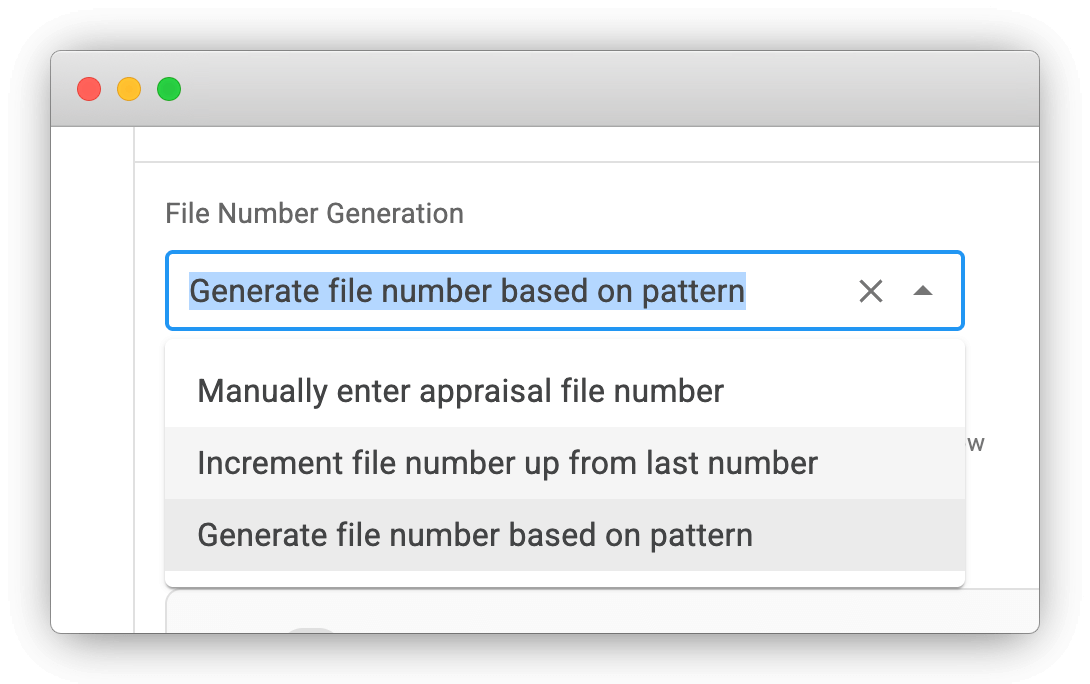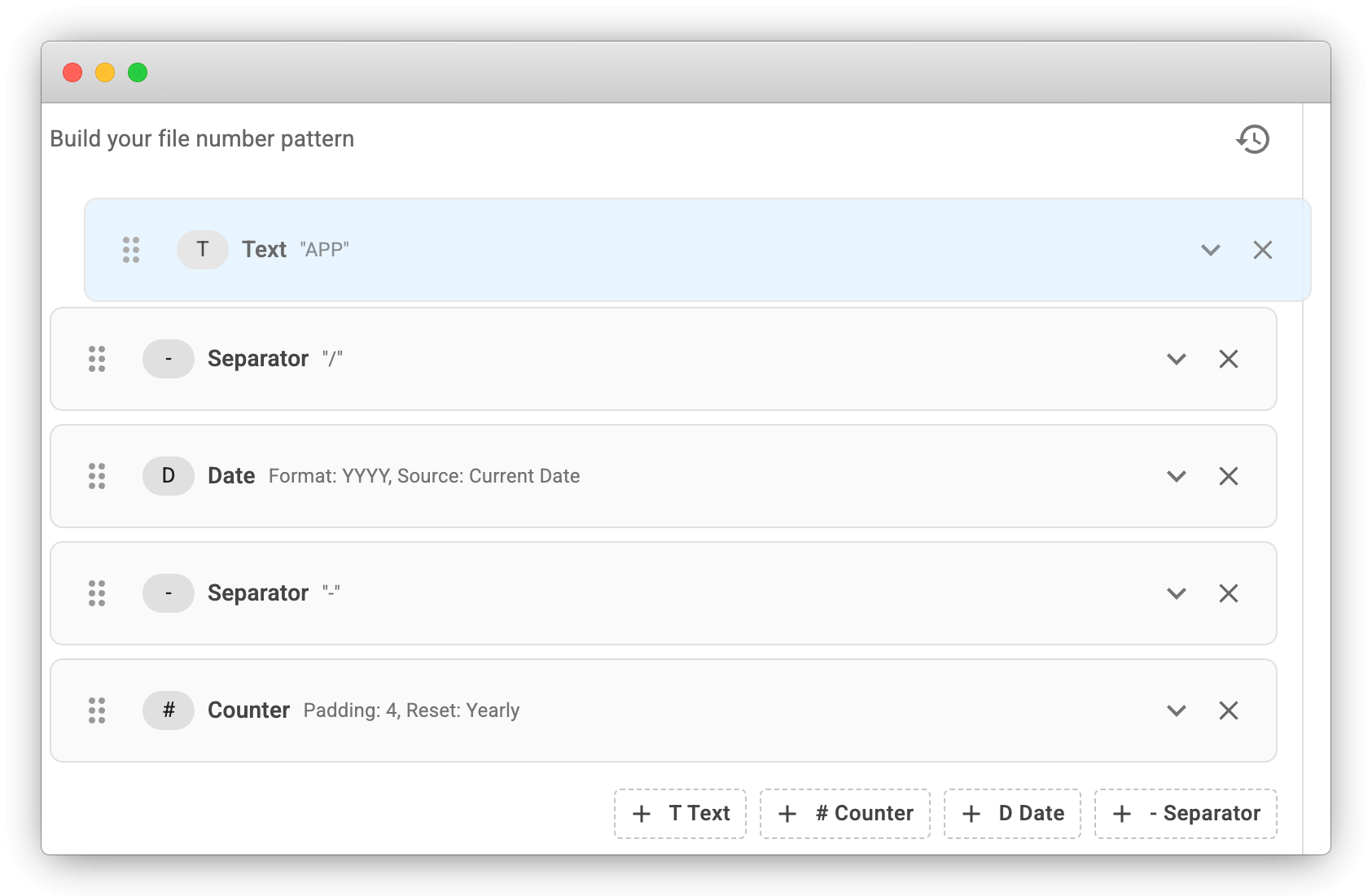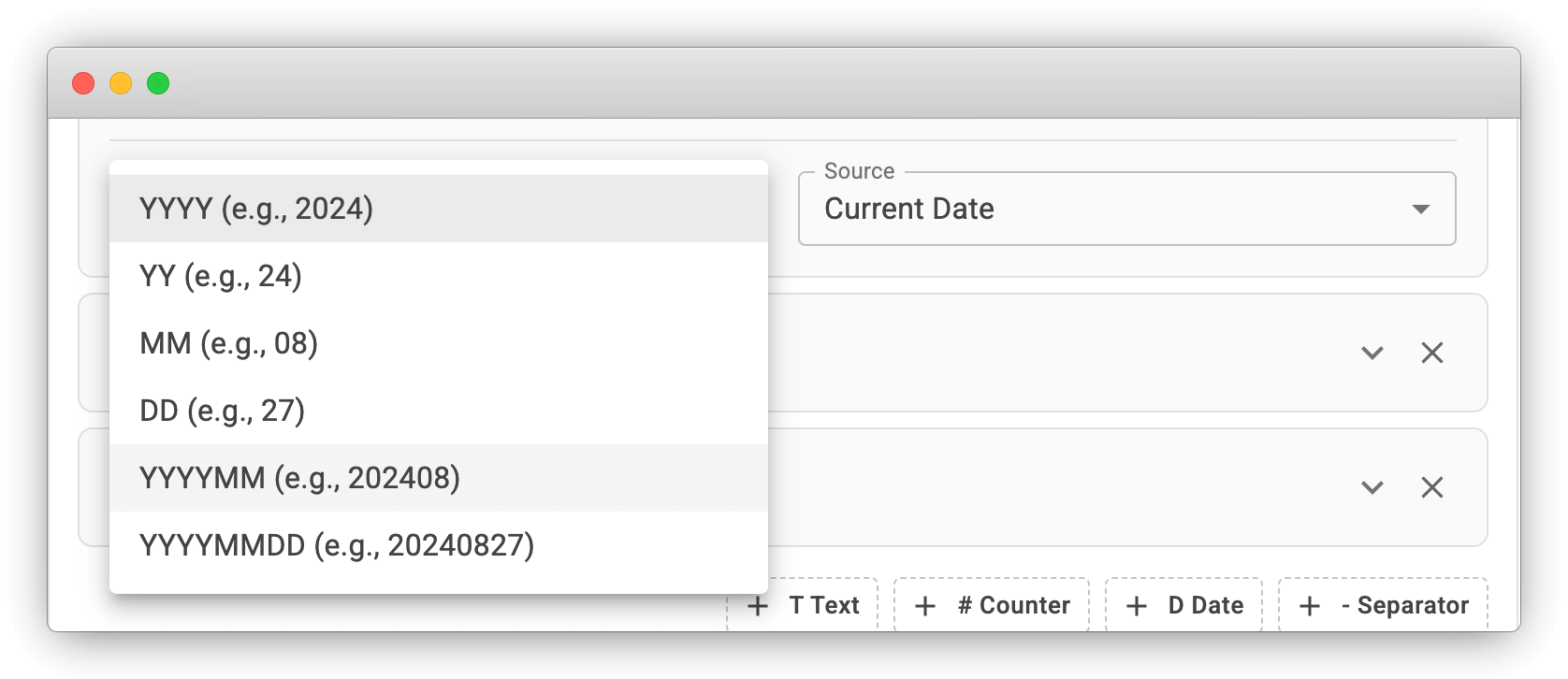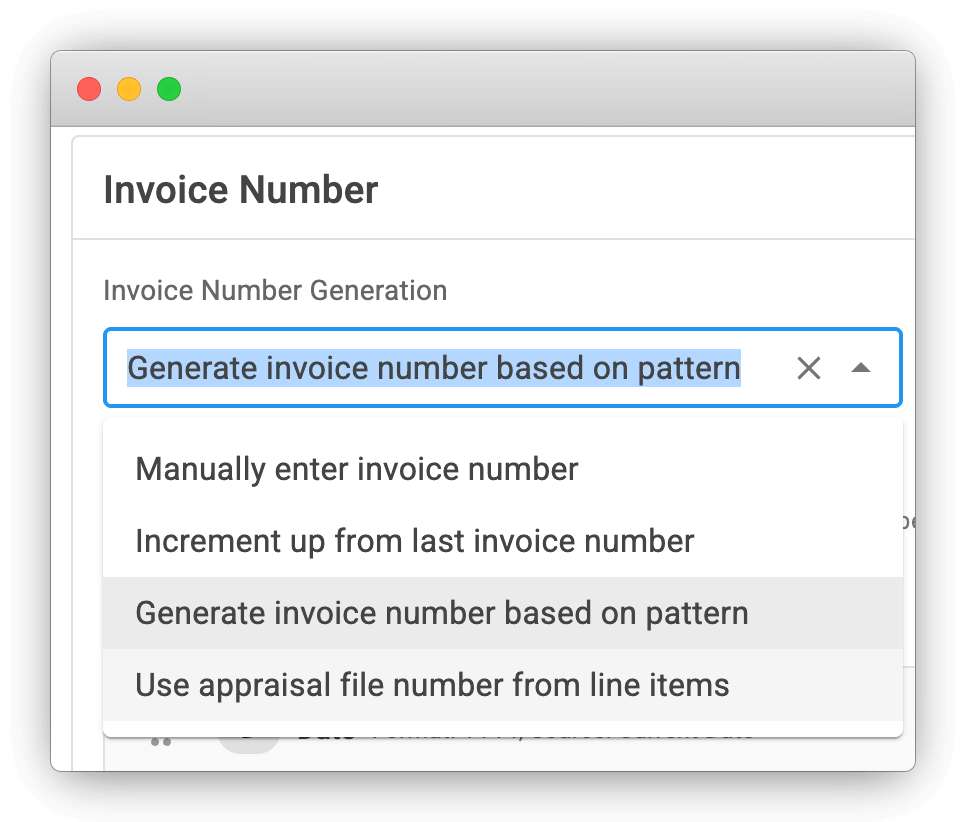Last updated: October 2, 2025
File Number Configuration
Learn how to set up automated file numbering for your appraisal orders and invoices in just minutes! File Number Configuration eliminates manual lookup, prevents duplicates, and ensures consistent formatting across your organization.
Only users with Account Owner roles may configure file number settings for the organization.
Appraisal File Number Configuration
Navigate to Organization > Appraisals to configure your appraisal file numbering system.
Choose Your Generation Strategy

You have three options for generating appraisal file numbers:
- Manually enter appraisal file number - Complete control over each file number
- Increment file number up from last number - Simple auto-increment from your most recent file number
- Generate file number based on pattern - Build sophisticated numbering schemes using multiple components
Building Custom Patterns
When you select "Generate file number based on pattern", you can create sophisticated numbering schemes using our intuitive drag-and-drop pattern builder:

Available Pattern Components
You can build your file number pattern using these flexible components:
📝 Text Components: Add unchanging text like "APP", "COMM", or your company initials
📅 Date Elements: Include various date formats:
- YYYY (e.g., 2024) - Four-digit year
- YY (e.g., 24) - Two-digit year
- MM (e.g., 08) - Two-digit month
- DD (e.g., 27) - Two-digit day
- YYYYMM (e.g., 202408) - Year and month combined
- YYYYMMDD (e.g., 20240827) - Full date

➖ Separators: Use dashes (-), slashes (/), or other characters to structure your numbers
🔢 Counters: Add sequential numbers with:
- Customizable padding (e.g., 0001, 001, 01, 1)
- Reset periods: Yearly, Monthly, or Never
- Starting number configuration
Start with a simple pattern and add complexity only as needed. You can always modify your pattern later!
Example Pattern Configurations
Simple annual pattern: APP/2025-0001, APP/2025-0002, APP/2025-0003
- Text: "APP"
- Separator: "/"
- Date: Current year (YYYY)
- Separator: "-"
- Counter: 4-digit padding, resets yearly
Monthly reset pattern: 2025-08-001, 2025-08-002, 2025-09-001
- Date: Year and month (YYYYMM)
- Separator: "-"
- Counter: 3-digit padding, resets monthly
Simple increment: 2024001, 2024002, 2024003
- Date: Current year (YYYY)
- Counter: 3-digit padding, resets yearly
Invoice Number Configuration
Navigate to Organization > Invoices to configure your invoice numbering system.

Invoice numbering offers the same three generation strategies as appraisal file numbers, plus an additional option:
- Use appraisal file number from line items - Automatically inherit the file number from associated appraisal orders
This fourth option creates perfect alignment between your appraisal orders and billing, ensuring invoices use the exact same numbering as their corresponding appraisals.
Invoice Pattern Building
Invoice patterns work identically to appraisal file number patterns, using the same drag-and-drop interface and component options. You can create completely separate numbering schemes for invoices or use patterns similar to your appraisal file numbers.
How It Works in Practice
Once configured, file numbers are automatically generated when:
- Adding new appraisal orders through the Smart Form
- Creating new invoices
The generated number appears automatically but can always be manually overridden if needed for specific circumstances.
When you change your file number pattern, it only affects new orders going forward. Existing orders keep their current file numbers.
File Number Preview
The configuration interface shows a live preview of your numbering pattern:
- Last: The most recently used number
- Current: What the next number will be
- Next: The number after that
This preview updates in real-time as you modify your pattern, helping you verify the format before saving.
Best Practices
Keep it simple: Start with a basic pattern and add complexity only if needed
Consider your volume: Choose appropriate counter padding based on how many orders you process
Plan for growth: Consider how your numbering scheme will work as your business scales
Test patterns: Use the preview feature to verify your pattern generates the expected format
Document your system: Make sure team members understand your numbering convention